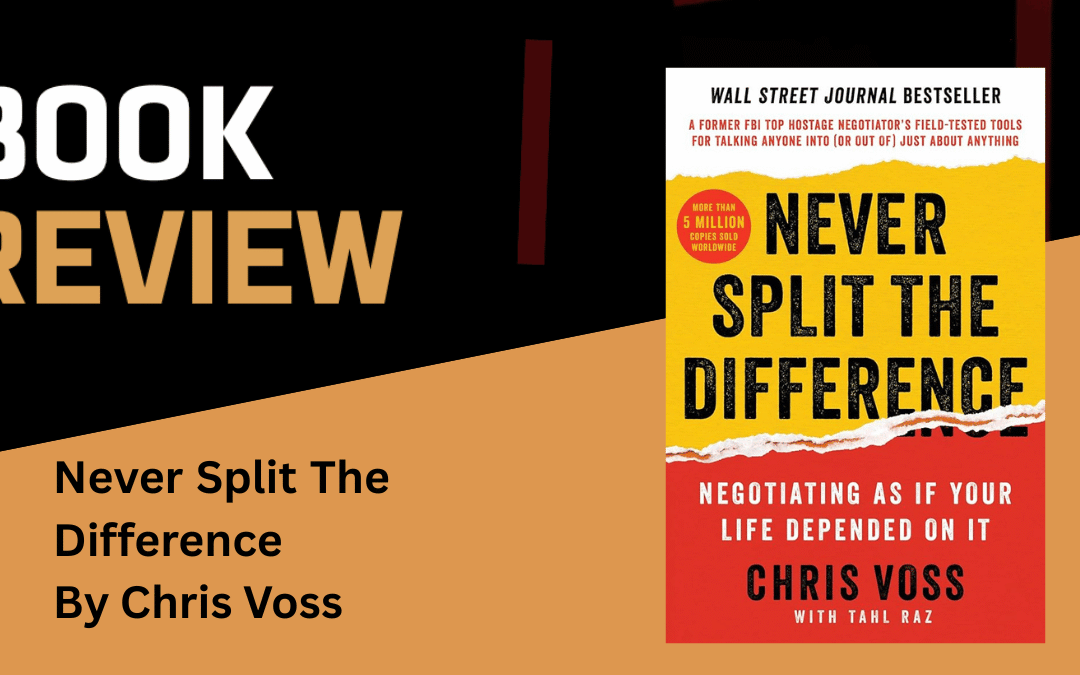Some negotiation books sound like they were written in a closed room far away from real life. This one does not. Chris Voss is not just another voice sharing theory. He has lived through conversations where the wrong word could mean the loss of a life. As a former FBI hostage negotiator, he brings lessons shaped by high-pressure moments that most of us will never see, yet can still learn from.
The title makes a clear statement. “Never Split The Difference” tells you that compromise is not always the best path. When you split the difference, you can end up with a result that pleases no one. In tense situations that can be dangerous. In daily life it is a quiet way to let good opportunities slip by.
Listening with Intent
Many believe the person who talks most in a negotiation has the upper hand. Voss shows that the opposite can be true. Listening, and doing it well, gives you the information you need to guide the outcome. Silence is not awkward when it is used with purpose. It is space for the other person to reveal what matters most to them.
One of the strongest ideas in the book is that negotiation is not a fight. It is a search for information. Your role is to find out what the other side really needs. Often they are not even fully aware of it until you help them get there.
Why Emotion Works in Your Favor
It is common to hear that emotion clouds good judgment. Voss takes a different view. People make choices with emotion first and logic second. Ignoring that is a mistake.
This is where “tactical empathy” comes in. You do not have to agree with someone to understand them. You need to step into their view of the situation, even for a moment. Simply saying “It sounds like you are frustrated” can calm the air. The other person feels heard and is more willing to listen in return.
Tools You Can Use Right Away
The best part of this book is how quickly you can apply its ideas. You negotiate every day. At work. At home. Even when trying to convince a child to put away their toys.
The “mirroring” technique is simple. Repeat the last few words someone says. It works because it shows you are paying attention and prompts them to explain more. I tried it with a friend over coffee. She kept talking for another five minutes while I only spoke a few words.
Another is the “accusation audit.” Before a hard conversation, list everything negative the other person might say about you. Bring them up before they do. This takes the sting out of their words and shows you are aware of their concerns.
The Problem with Win-Win
Many people aim for a win-win result. Voss warns that this can hide problems. Sometimes both sides walk away unhappy but too polite to admit it. Or one side feels they were taken advantage of.
Voss says clarity matters more than balance. A slightly uneven deal that is clear and honest will last longer than one that looks fair but leaves room for doubt.
How It Changed My Approach
Reading this book shifted how I handle disagreements. I slow down before defending my position. I ask more questions. I let silence do its work. I am not less assertive, but I am harder to throw off track.
It reminded me of lessons from other books I have reviewed, like The Power of Now and The Storyteller’s Secret. While they cover different subjects, they share a focus on presence and connection.
Why You Should Read It
If you want flashy quotes or tricks, this is not the book for you. If you want practical tools that make you more effective in any conversation, it is worth your time.
You do not have to follow every step exactly as Voss teaches. Adjust them to fit your style. The real value is in how it changes your thinking. You start looking at every interaction as a chance to learn what matters to the other person, not just to win an argument.
For more of my reviews, visit the Book Review section or explore The Bright Forever by Lee Martin and Where the Mountains Meet the Moon.
“Never Split The Difference” is more than a guide to negotiation. It is a reminder that the most powerful way to influence others is to understand them first. Once you see it that way, you will never approach a conversation the same again.


